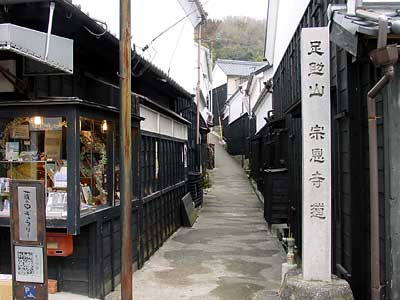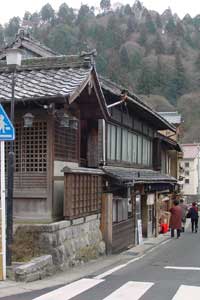
Travel Guide
Chuma Kaido well preserved with the buildings built in the later period of Edo period in Japan. The age residence with white walls and the former symbol of affluence warehouse can be seen everywhere. There are still some old roads along the Tomoe River, which flows through the center of the city. Wandering in the area that used to be rich in salt transportation, the nostalgic scene makes it unforgettable for travelers. Located in the Chuma Kaido, the Asuka branch of the former Inabashi Bank was reformed to Asuke Chuma Museum in 1912, displays the relevant information of the later period of Edo period in Japan, how to decide the freight of the Chuma Kaido, etc., Any of them is quite precious, and you can also see the shops in Meiji period in Japan.
Since ancient times, the riverside town of Asuke-cho with Chuma Kaido has been a traffic hub on the Ina Street (later called Ida Street after Meiji period in Japan) connecting Owari-sanga (now Aichi Prefecture) and Shinshu (now Nagano Prefecture). Chuma Kaido is another name for Ida Street. In fact, the Chinese characters of the town’s name indicate it is a place to “rest legs,” and the legs in need of rest were not just human, as packhorses were also given a respite from carrying the heavy tawara bundles weighing nearly 120 kilograms. “Chuma” is equivalent to the freight forwarders today. The name is originated from the vocabulary "horse rental" and "relay horse" used in the trade union formed by people engaged in horse transportation in Shinshu during the Edo period of Japan.
Chuma Kaido is also known as the "Salt Route", which was developed to transport the salt produced in Sanga Bay to the mountains. Freight forwarders “Chuma”transported Gongmi, cigarettes, mountain specialties and other materials from Shinshu to Asuke-cho. At the same time, thy also transported the salt called "Asuke Salt" or "Asuke Naoshi" to Shinshu. The various salt bundles were packed in different weights, and had different properties depending on their origin. Wholesalers in Asuke-cho sorted salt to achieve a standard taste and quality, and repacked it in tawara for the journey to Shinshu. There were 14 salt wholesalers at the end of the Edo period in Japan. By the middle of the Meiji era in Japan, more than 20,000 packages of salt bags were transported to Shinshu every year. According to the amount of four packages that a horse can carry, at least 5,000 horses were needed every year.
Vehicles have long since been replaced horses, and gasoline and natural gas are now transported instead of salt along Chuma Kaido (now National Route 153) between Aichi and Nagano. Nevertheless, the importance of this route remains unchanged. The route that once handled salt, which provided energy for biological life, now supplies energy in the form of fossil fuels. In that regard, perhaps it could be called Energy Road. All told, Salt Road continues to thrive as a lifeline.


Travel Advice
Events
| Events in 2019 | ||
| Dolls in Chuma | Around 5,000 dolls are lined up in the front porches of the houses and shops. There are many types of dolls, including dolls which have been passed down from generation to generation and a simple clay doll. The oldest were made 150 years ago. | Feb 9(Sat) to Mar 10(Sun) |
Tourist Map
Please visit the website of Asuke Tourist Assocaion for English Asuke Tourist Map。
Visit
| Address | Asuke-cho, Toyota-shi, Aichi | |
| Phone | 0565-62-1272(Asuke Tourist Association) | |
| Admission | Free | |
| Hours | Free time | |
| Closed | Open 7 Days a Week | |
| Duration | 30 minutes | |
| Getting There | By Train Take Meitetsu Bus from Higashi-Okazaki Station on Nagoya Honsen of Nagoya Railway to the Asuke bus stop, then walk approximately 1 minute. By Car Take Tokai-Kanjo Expressway to the Toyota-Kanpachi exit and take National Highway route 153. It is approximately 15 kilometers 20 minutes from exit. |
|
| Parking | No parking available | |

